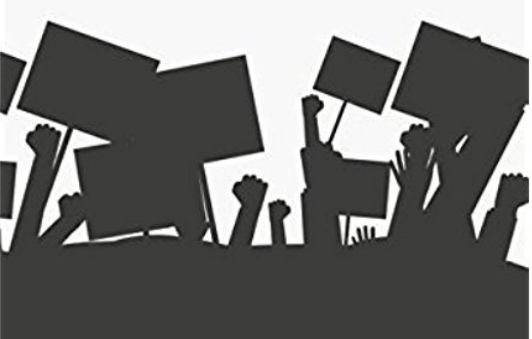
In December 2017, Goodreads, a subsidiary of Amazon, interviewed Angie Thomas, the author of the young adult novel The Hate U Give. By any standards, the book had enjoyed a feted reception. The manuscript had been the subject of a bidding war, which was eventually won by Balzer + Bray, an imprint of HarperCollins. Released in early 2017, the book went straight to the top of the New York Times Young Adult best-seller’s list, and it was still on the charts nine months later. Moreover, the book had already won two young adult fiction awards and was nominated for a slew of others, including the British Book Awards Children’s Book of the Year, the Carnegie Medal and the Coretta Scott King Book Award. If that wasn’t enough, the book had been instantly canonised by English teachers. As Thomas herself told Goodreads, “These past few days I was actually in St Louis, Missouri, for the annual convention of the National Council of Teachers of English. I had hundreds of teachers tell me that they are using the book in their classroom.” Did I mention that Hollywood had already bought the film rights?
This essay appeared in a recent Quadrant.
Click here to subscribe
Yet, what conclusion was drawn from all of this corporate adoration? Intriguingly, one of the main talking points was the marginalisation of black voices—the disservice which the publishing industry did black women in general, and Angie Thomas in particular. Thomas harrumphed, “I told my publisher HarperCollins recently, when I was growing up, you guys basically failed me because you assumed that kids like me don’t read, and that’s a lie.” She also claimed of The Hate U Give, “It’s given some young readers the first mirror of themselves that they’ve seen in a book.”
In other words, even while Thomas was winning awards, acclaim and movie deals from corporate America, she was claiming to be a victim of marginalisation, oppression and white supremacy. And a large part of the rationale for this claim was a supposed lack of young adult novels which represented her identity group—black women. However, something seemed awry. As earlier mentioned, she was a nominee for the Coretta Scott King Awards, which exclusively recognise books for young adults and children by African-American authors. In 2017, the awards were already in their forty-seventh year. Why was Thomas using her voice to downplay the literary productions of African-American authors over the past half-century? If celebrating black history was so important, why did Thomas want to pretend that she was a pioneer and no black women had gone before her?
Unfortunately, Thomas’s disingenuous stance is far from unique. Nic Stone, the author of Dear Martin and four other young adult novels, offered the same misleading view when she was interviewed by the Children’s Book 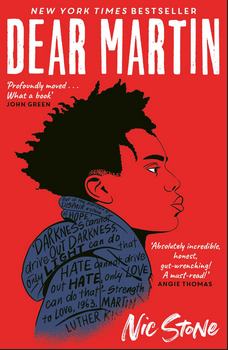 Council:
Council:
The fact that we’re almost two decades into the 21st Century and just now beginning to see books written in English that reflect the realities of the English-speaking world says a lot about who, historically, has been expected—or even allowed—to achieve English literacy.
Just now? It is dispiriting that Stone feels she has to erase the literary output of other black women to claim her own moment in the spotlight, but she is hardly alone in this respect. Claims of eternal victimisation and erasure are now the calling card of almost every woke artist of the black, indigenous, female or LGBT+ varieties. Ironically, it is progressive artists themselves who are inflicting erasure on previous generations of authors. As woke artists head out into the world, seeking personal status and enrichment, they frequently sermonise about inequality and injustice, but their sharp-elbowed tactics towards their predecessors belie their claims to empathy and virtue. If we are ever to end this dishonest and degrading spectacle, we need to debunk the myths of the “We Need Diverse Books” and “Own Voices” movements. It is also necessary to look at the role which universities have played in mainstreaming and institutionalising myths of marginalisation.
From reading interviews and articles with Angie Thomas, Nic Stone and Carole Boston Weatherford, I identified a series of characteristic assertions about the history of young adult fiction.
1/ Racial minorities were not allowed to write realistic books, or possibly even achieve literacy, until the end of the 2010s. (Nic Stone)
2/ Black teens could not find a “mirror” in young adult fiction until recently. (Angie Thomas)
3/ Realistic depictions of discrimination and racism were forbidden until just now. (Nic Stone)
4/ Black stories are “untold” and not taught in schools. (Carole Boston Weatherford)
5/ Publishers assumed black children didn’t read books. (Angie Thomas)
6/ White people do not want to read books where black Americans are “actual people”. (Nic Stone)
These assertions are either completely and obviously false (1 to 4) or racist generalisations based on the behaviour of certain individuals (5 and 6). Yet the interviewees were not questioned about these wild and groundless claims. The fawning interviewers were much more concerned about congratulating them on their bravery in speaking “truth to power” and their profound insight into “race relations” in America. But let’s take a break from this lovefest by fact-checking some of the claims made by the new YAF elite. First, let’s look at the early history of African-American YAF to see if black writers were really being oppressed and silenced until just now.
YOU COULD spend a lot of time arguing about just when young adult fiction emerged as a distinct genre, but the most common answer would be the late 1960s. While books like Catcher in the Rye (1951), Lord of the Flies (1954) and To Kill a Mockingbird (1960) are often categorised as young adult fiction today, they were written for adults. It was English teachers in search of “readable” novels who first co-opted them for teen audiences. Vox magazine is not alone in arguing that young adult fiction began in earnest with The Outsiders by Sue Eloise Hinton. First published in 1967, it went on to sell 15 million copies, helping to establish young adult fiction as a lucrative genre. Pertinently, many women novelists achieved success in the first decade of young adult fiction—Beatrice Sparks, Madeleine L’Engle, Judy Blume and Ursula LeGuin, to name but a few—yet this fact is usually ignored by progressive commentators, as they understand the utility of the myth of marginalisation.
Despite what Angie Thomas believes, black writers were early on the scene as well. As far back as 1970, Coretta Scott King (author, activist and widow of Martin Luther King) was handing out awards to African-American authors of books written for children and teens. In contrast, young adult books of the sexual-minority variety were much slower to develop. For example, “Hello”, I Lied, the first bisexually-themed young adult novel, did not appear until 1997. Luna, the first young adult book about a transgender protagonist, was published 2004. (Teen books dealing with an ever more exotic range of “gender identities” now proliferate. The latest scam is to adopt a sexual identity that didn’t exist until last week—“lithosexual” is a recent addition—and use that to substantiate claims of being on the margins.) However, I would argue that most marginalisation claims should not be approached as a description of reality but rather a furtive demand for attention, recognition and status. In our current century, the mere mention of the word marginalisation should be enough to signal the writer’s designs on valuable resources.
But what then of the claim that even if black writers have been published for generations, they weren’t allowed to speak authentically and realistically? To dispel this self-serving myth, we should turn to A Hero Ain’t Nothin’ but a Sandwich (1973) by Alice Childress. Set in a drug- and crime-ravaged black neighbourhood, the book is a series of monologues from (mostly) African-American characters. The central character is Benjie Johnson, a nihilistic thirteen-year-old heroin user, who speaks in a form of vernacular English which is better experienced than described:
It ain’t really Tiger’s place all to hisself. Is his aunt’s house. She be out workin a sleep-in job and come home only once-twice a week. Tiger’s mother is in a hospital gettin over some kinda breakdown, so this place is just bout like almost his own. Tiger is fifteen and a baaaaaad cat. Tiger is makin hisself money.
Say what you will about the vices of Ms Childress’s prose, but pandering to white audiences isn’t one of them. Nor 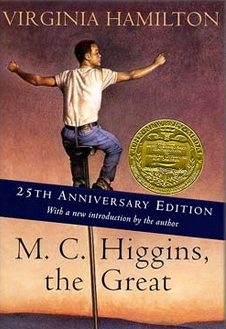 are the political opinions expressed by Mr Nigeria Green, a Black Nationalist teacher working at Benjie’s school. Nigeria never misses an opportunity to explain how this whole mess is the fault of “whitey” (he also calls white Americans “slave owners”, “slaveholders”, “white conquerors” and even “the enemy”). In Nigeria’s view, even God is a white supremacist, “I felt hatred for that evil God who made us sing, weep, beg and pray for humble admittance into his white heaven.” Whether morally condemning George Washington or fierily denouncing segregation, Nigeria’s talking points have been lifted wholesale from the Black Nationalist demagoguery of Stokely Carmichael. The following statement is typical of his stridently anti-white rhetoric:
are the political opinions expressed by Mr Nigeria Green, a Black Nationalist teacher working at Benjie’s school. Nigeria never misses an opportunity to explain how this whole mess is the fault of “whitey” (he also calls white Americans “slave owners”, “slaveholders”, “white conquerors” and even “the enemy”). In Nigeria’s view, even God is a white supremacist, “I felt hatred for that evil God who made us sing, weep, beg and pray for humble admittance into his white heaven.” Whether morally condemning George Washington or fierily denouncing segregation, Nigeria’s talking points have been lifted wholesale from the Black Nationalist demagoguery of Stokely Carmichael. The following statement is typical of his stridently anti-white rhetoric:
Black children are … forced to study the history of their white conquerors, this peculiar place of white facts, white questions, white answers and white final exams.
What this shows is that radical black politics has been a prominent part of young adult fiction since the early 1970s. Moreover, far from being rejected by the literary world, Childress’s book received a glowing review from the New York Times, was a finalist for the National Book Awards, and won the Lewis Carroll Shelf Award. It has been studied in American schools for decades and in 2021 Time magazine lauded it as one of the Best Young Adult Fiction books of all time. Nor was its reception in any way uncharacteristic. The following year, M.C. Higgins the Great, by African-American author Virginia Hamilton, won three of the biggest awards in the field—the National Book Award, the Newbery Medal and the Boston Globe-Horn Book Magazine Award.
Yet the class of 2014—the BLM generation—now go from interview to interview asserting that black invisibility in young adult fiction is finally changing just now, fallaciously painting themselves as the heroic breakers of moulds, glass ceilings and much else besides. Their corporate interviewers are too concerned with earning woke brownie points to ever correct their groundless statements.
What about Nic Stone’s claim that many aspects of racism and discrimination were all but unmentionable until the 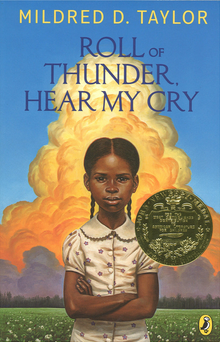 present day? It turns out to be equally unsupportable. Between the mid-1970s and mid-1990s, there was a steady stream of young adult fiction books about historical and contemporary racism. A leading example was 1976’s Roll of Thunder, Hear Me Cry by Mildred D. Taylor, which was awarded the prestigious Newbery Medal. The book portrays the persecution of an African-American community in Mississippi in the 1930s by the murderous Wallace clan, who have burnt two black men to death and left another hideously disfigured. The menace of the KKK hovers over the book, which ends with an attempted lynching and the unjust incarceration of an African-American male. While this is the big picture, the novel fairly teems with racially charged incidents. White children not only scream racist slurs out the windows of their school bus but also enjoy seeing black children covered in dust. When the black students receive schoolbooks, they are dirty hand-me-downs from white students. Adding insult to injury, racial pejoratives have been written inside the books. Everything from the transport system to the flags flying over government buildings are symbols of institutional racism. Yet in spite of all this hatred and discrimination, the Logan family engage in acts of civil disobedience such as removing racist epithets from schoolbooks, even though it earns them a whipping. In other words, Rosa Parks has been unfairly valorised, as the Civil Rights movement was actually started twenty years earlier by the Logan clan.
present day? It turns out to be equally unsupportable. Between the mid-1970s and mid-1990s, there was a steady stream of young adult fiction books about historical and contemporary racism. A leading example was 1976’s Roll of Thunder, Hear Me Cry by Mildred D. Taylor, which was awarded the prestigious Newbery Medal. The book portrays the persecution of an African-American community in Mississippi in the 1930s by the murderous Wallace clan, who have burnt two black men to death and left another hideously disfigured. The menace of the KKK hovers over the book, which ends with an attempted lynching and the unjust incarceration of an African-American male. While this is the big picture, the novel fairly teems with racially charged incidents. White children not only scream racist slurs out the windows of their school bus but also enjoy seeing black children covered in dust. When the black students receive schoolbooks, they are dirty hand-me-downs from white students. Adding insult to injury, racial pejoratives have been written inside the books. Everything from the transport system to the flags flying over government buildings are symbols of institutional racism. Yet in spite of all this hatred and discrimination, the Logan family engage in acts of civil disobedience such as removing racist epithets from schoolbooks, even though it earns them a whipping. In other words, Rosa Parks has been unfairly valorised, as the Civil Rights movement was actually started twenty years earlier by the Logan clan.
To be fair, this book is better written than most young adult fiction, with realistic dialogue and a well-structured plot, but there is no escaping the conclusion that this is message fiction. And the message that America is deeply racist and discriminatory is the glue that holds the book together. Far from being marginalised, these issues are incessantly foregrounded.
The same is true of many leading titles of the next two decades. For instance, Joyce Hansen published her Obi and Easter trilogy, which focuses on slavery and racism in the Civil War and Reconstruction periods. Nightjohn by Gary Paulsen explores similar terrain. And Carolyn Meyer’s White Lilacs deals with a white community’s plans to raze Freedom—the black part of the Texan town of Dillon—during the early 1920s. Indeed, moral condemnation of white racism and discrimination was the hallmark of black young adult fiction in the late twentieth century. If anything, these kinds of stories were in danger of seeming old hat by the 1990s, with indigenous, Muslim, Asian and gay and lesbian-themed equivalents having more novelty value for progressives.
However, with the shooting death of Trayvon Martin in 2012 and the subsequent formation of the Black Lives Matter movement, black young adult fiction returned to centre stage. African-American writers had found a new cause célèbre: the killing of black teens by white police. The teen problem novel had become something of a cliché, but the BLM movement offered it a new lease of life. Though there was nothing truly ground-breaking in the resulting wave of fiction, the following trends could be observed.
♦ Focus on shootings, especially police shootings, as the “new lynching”.
♦ Remarkable levels of ideological conformity.
♦ A return to pro-segregationist views, now espoused by the activist Left.
Consider three books published between 2015 and 2017. In 2015 Kekla Magoon published How It Went Down, which deals with the killing of Tariq Johnson, an unarmed sixteen-year-old, by Jack Franklin, a white youth. Two years later, Angie Thomas (known for ending interviews by crying, “Black Lives Matter!”) published The Hate U Give, a title inspired by the rapper Tupac’s famous THUG LIFE tattoo, which, the novel tells us, is an acronym for “the hate u give little infants f***s everybody”. (In interviews, Thomas has repeatedly cited Tupac as a major inspiration, ignoring his history of sexual violence towards women.) Her novel deals with the murder of Khalil, another unarmed black youth. Unsurprisingly, the killer is a white police officer. 2017 also saw the release of Nic Stone’s Dear Martin, in which Justyce McAllister, a seventeen-year-old black youth, is wrongly arrested by a white police officer, who uses excessive force. Justyce is later traumatised when another black male is murdered by a 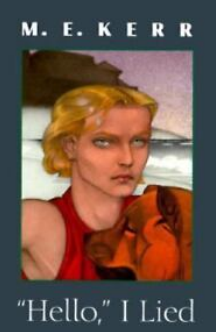 white police officer. By this stage, shootings of unarmed black males by white men—especially police officers—were the new “lynching” of young adult fiction, a trope repeated in title after title.
white police officer. By this stage, shootings of unarmed black males by white men—especially police officers—were the new “lynching” of young adult fiction, a trope repeated in title after title.
I would argue that the remarkable similarities between these books are the result of their authors having been marinated in the ideology of Critical Social Justice. They were writing novelisations of trendy political dogmas. Tellingly, Magoon teaches writing at the Vermont College of Fine Arts and Angie Thomas graduated from a creative writing program at Belhaven University. All three writers see the world through the lens of modern identity politics, and they pepper their interviews with terms from the Social Justice dictionary. For instance, when asked about her next novel, Nic Stone replied, “It deals with another marginalised aspect of my identity (yay #intersectionality!)” Angie Thomas speaks the same lexicon. Discussing Chris Bryant, a rare non-racist white character in Thomas’s fiction, she says, “He shuts up, he listens, and he’s on his way to getting woke, he’s on his way to becoming an ally.”
The idea that “allyship” means “shutting up and listening” is a quote lifted directly from Mia McKenzie, a Black Queer activist and writer. But how does allyship look in practice? Well, during one especially cringeworthy part of Thomas’s novel, Chris says, “I’m sorry … I feel like I should apologise on behalf of all white people everywhere.” And here we see the only path to redemption which is laid out for white Americans by woke authors—shutting up and non-critically accepting all the half-baked dogmas of Social Justice activism.
Consider the words that these authors use to discuss their fiction: marginalisation, identity, intersectionality, wokeness, allyship. One of the current myths of young adult fiction is that writers like Thomas and Stone are writing from their unique “lived experience” as black women. Based on the evidence, they are more often parroting the pseudo-academic gibberish which now dominates universities. The degree of ideological conformity is remarkable, speaking to the success of the academy in indoctrinating young people.
Which leads us to the final myth of marginalisation: the idea that young adult fiction is helping to end the racial segregation of American society. This was certainly the case when Alice Childress introduced Benjie Johnson and Nigeria Green in 1973, but the opposite is true today. The BLM generation sees the world through a rigidly segregated “black” and “white” binary. Angie Thomas uses the words black and white sixteen times in the first chapter of The Hate U Give alone. In one interview, Nic Stone used them six times in a single, rambling sentence. Racial categories are the lens through which they see all interactions, creating a strangely distorted world in which black people are victims, white people are either vicious killers or whitesplaining buffoons, and other races barely exist. Groups are so entirely defined by their racial identities that desegregation seems impossible.
Therefore, how did Nic Stone and Angie Thomas spend 2021? Each contributed a piece to Blackout, an anthology of young adult short stories in which all six authors were black women. Though they will not explicitly admit it, writers of the BLM generation are pro-segregationist, with every group isolated in its own literary ghetto. They are taking America back to rigid and segregated racial categories, a kind of Jim Crow for the twenty-first century. The genre has entered a deeply regressive phase, led astray by myths of marginalisation.
Sean Wayman’s poetry appears frequently in Quadrant
 Sign In
Sign In 0 Items (
0 Items ( Search
Search









Sean,
This is an important piece of writing, Well done. Literature as indoctrination is a terrible thing, especially when it is imposed on the young.
Cheers,
Daryl McCann
In Australia – Indigenous poetry and young adult fiction has been writing the same revolutionary ‘trope’ about Invasion Colonisation and Genocide – since I first heard Kath Walker in the 70’s Anita Heiss wrote a book titled ‘Am I Black Enough For You” ( the title was the best thing about it) after receiving copious grants and awards and after suing Andrew Bolt for offending her by pointing out her non Aboriginal Heritage. Meanwhile the real Aboriginal ‘Song Language’ of the Tiwi about the Turtles and the crabs and the snakes and kangaroos – goes unpublished and unnoticed and largely unknown. The Indigenous poets have repeated the same poem over and over again for at least fifty years in different ways. It is all very mediocre and uninspiring and publishing Indigenous literature has become just another trough for the Indigenous lefties to wallow in – laughing at us – fingers pointing – culturally appropriating both poem and novel … and doing it badly – being paid for it – by – well, us.
Forever, black people have been denied their right to tell their stories, but the history of black people has forever been passed between generations via one channel only. Storytelling.
Imagine spending your precious time and hard earned on being propagandised by the Woke imagining themselves victims…